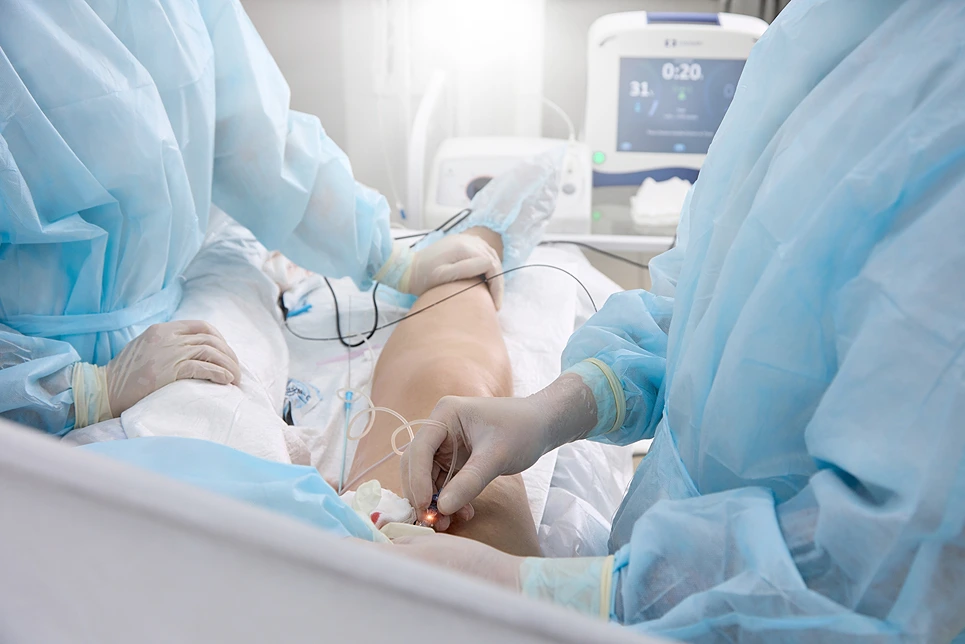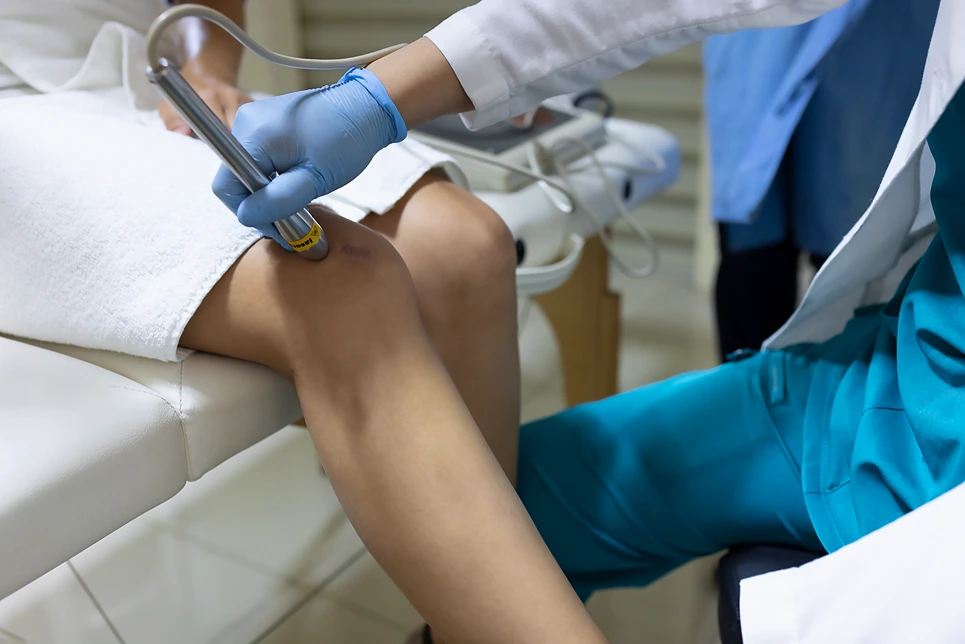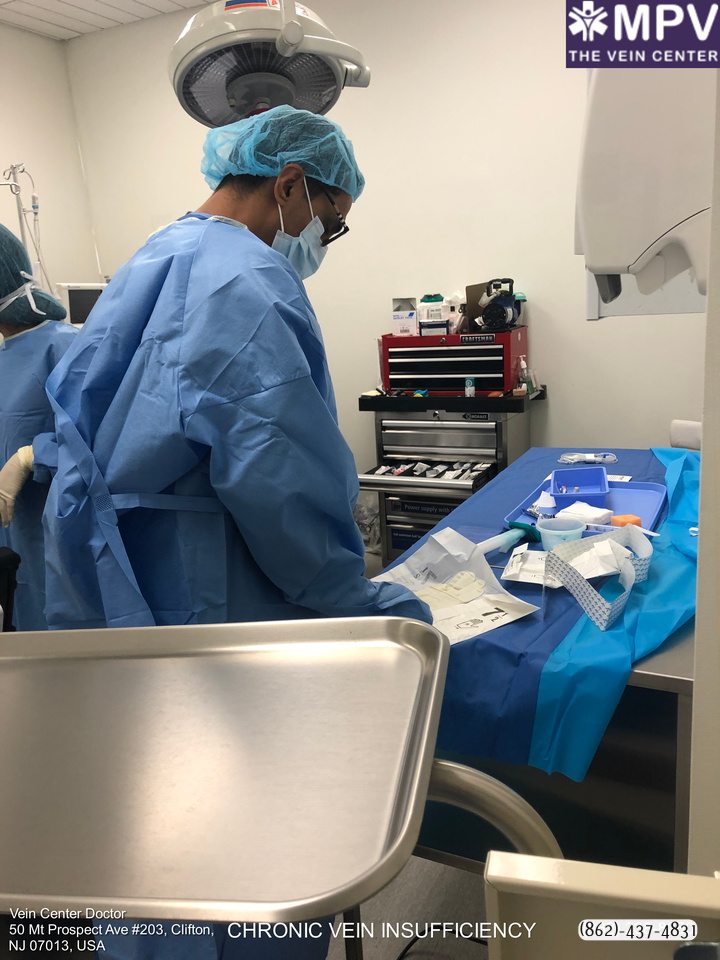
Chronic venous insufficiency (CVI) is a common condition affecting the veins in the legs. It occurs when the one-way valves inside the veins stop working properly, causing blood to flow backwards and pool in the veins.
This results in a variety of symptoms like leg pain, swelling, varicose veins, and skin changes. If left untreated, CVI can worsen over time and lead to serious complications.
Fortunately, a minimally invasive procedure called endovenous laser ablation (EVLA) provides an effective treatment option for CVI.
Keep reading to learn more about how EVLA works, what to expect during treatment, and how it can provide lasting relief for CVI.
Living with unwanted veins is a thing of the past, when you can simply schedule a free consultation with Vein Center Doctor and find your ideal solution today.
CVI occurs when the one-way valves inside the veins in your legs stop working correctly. These valves are responsible for keeping blood flowing in the right direction - from the legs up to the heart.
When the valves become damaged or wear out, blood starts to flow backwards and pool in the veins. This causes pressure to build up, stretching the veins and the valves further. Over time, it leads to the characteristic signs and symptoms of CVI.
Some common causes of valve damage that can lead to CVI include:
EVLA is a minimally invasive treatment that uses laser energy to seal off damaged veins. It allows your blood to reroute through healthier veins, restoring normal circulation in your legs.
Here’s a quick overview of how EVLA works:
The procedure takes less than an hour and only requires local anesthesia. Many patients report an immediate reduction in CVI symptoms following EVLA.
Endovenous Laser Ablation (EVLA) is a key method for treating varicose veins. It uses a technique called video laser. This involves a small cut in the leg to insert a laser fiber into the varicose vein.
The video laser delivers energy to close the vein. As the fiber moves back, it heats and seals the vein. This makes the vein collapse and the body absorbs it over time. Video laser makes EVLA precise and effective. It reduces pain and speeds up recovery.
Compared to traditional vein stripping surgery, EVLA offers many advantages:
For appropriate patients with CVI, EVLA is considered the gold standard treatment approach with long-lasting results.

EVLA works very well for treating CVI caused by damaged valves in the great saphenous vein, which runs from the ankle up the inner thigh.
Good candidates for EVLA include those who have:
EVLA may not be suitable for patients with arterial disease, deep vein thrombosis, or certain other health conditions. Be sure to discuss your medical history thoroughly with your vein doctor.
There are a few important steps to take when preparing for your EVLA treatment:
Following your doctor’s preparation guidelines helps ensure you heal quickly after EVLA.
The EVLA procedure is conducted in your vein doctor's office and takes 30-60 minutes to complete. Here's an overview of what happens:
You'll be awake for the entire quick procedure. Many patients describe it as painless, or only mildly uncomfortable.
The recovery period after EVLA is much shorter than with surgical options. You can expect:
Your doctor will want to see you for a follow-up visit 1-2 weeks after EVLA to check your progress.
Clinical studies show EVLA successfully closes the treated vein more than 95% of the time. In a procedure called phlebectomy, small branches of varicose veins are usually treated at the same time.
Together, EVLA and phlebectomy provide substantial relief from CVI symptoms by redirecting blood flow to healthier veins.
However, it’s important to note that CVI is a chronic, progressive condition. Some patients eventually need additional procedures to treat new problem veins that develop over time.
Lifestyle changes, medical management, and wearing compression stockings can help prolong benefits.
Many insurance plans cover EVLA for treatment of CVI, especially when more conservative approaches have failed. This includes Medicare and Medicaid. However, coverage can vary by plan.
Out-of-pocket costs for EVLA average $2,000-$3,000 if insurance does not cover the procedure. Many vein clinics offer payment plans to make treatment more affordable.
To get the exact cost for your treatment, talk to your vein doctor and confirm coverage with your insurance provider. Many clinics handle all aspects of the insurance process for you.

Experiencing discomfort from chronic venous insufficiency (CVI)?
While navigating your treatment options, knowledge is your first step towards relief.
Here at Vein Center Doctor, our vein specialists are here to provide insights and guidance on various approaches, including the latest advancements in minimally invasive treatments.
A consultation with us isn't just about procedures; it's about understanding your condition and exploring all available avenues for managing your symptoms effectively.
Your journey to a more comfortable life starts with informed choices. Reach out to learn more about how we can support your path to wellness.
Find exactly what you need to get rid of your vein-related problems. Dr. Sood and the rest of our team at Vein Center Doctor are ready to help: schedule your free consultation today.
Most Insurance is accepted for treatment